Deep in the underbelly of Earth's wildest frontiers, a silent battle is being waged, and the stakes are nothing short of life itself. Poachers armed with rifles and profit-driven greed exploit vulnerable wildlife as sentinels of conservation—human and animal alike—stand powerless. What if the ultimate weapon in this fight wasn't human at all, but artificial intelligence? What if the fate of endangered species hung in the cascading algorithms of a machine, the unblinking eye of a drone, or the tireless resolve of a robot?
As sci-fi as this may sound, the technological convergence we've only dreamed of is now becoming the planet's best hope for safeguarding biodiversity. Luminaries like Yuval Noah Harari have discussed AI’s growing influence on planetary-scale crises. Conservationist Dr. Jane Goodall has long championed the intersection between technology and environmental stewardship. Meanwhile, futurists like Tim Urban hypothesize how neural networks could serve as humanity's new compass in solving urgent ecological dilemmas. In the fight to protect wildlife, AI isn’t just a tool—it’s an idea. An idea capable of reshaping the playing field entirely.
Statistics from the World Wildlife Fund paint a grim picture: over 1,000 wildlife rangers killed in the line of duty over the last decade, more than 35,000 African elephants slaughtered annually for ivory. Habitat destruction is no less dire; tropical ecosystems vanish at a rate of 10 million hectares a year. Despite the heroic efforts of conservationists, these industries churn on unstoppably—scarcity is a commodity, and extinction is its silent currency. But what if machine intelligence could tip the balance?
In this article, we will investigate the blend of ingenuity, ethics, and cold, hard data as we step into a world where AI drones and robots could monitor and safeguard wildlife. This is not merely a tech story or a feel-good glimpse at progress—this is the frontline for the future of Earth's living treasures.
AI-powered conservation solutions, like aerial drones and robotic rangers, now support endangered species by detecting poachers in real-time, analyzing wildlife population trends, and automating land surveillance, bridging the gap between limited human resources and the escalating environmental crisis.
1. Understanding the Crisis: Wildlife Poaching and Habitat Destruction
1.1 The Alarming Scope of Poaching
Poaching isn't merely a crisis; it’s a colossal, organized industry worth billions annually. Each year, millions of animals pay the ultimate price, hunted for their tusks, pelts, horns, and scales. Targets range from rhinoceroses, whose horns are falsely believed to cure ailments, to pangolins, prized for their scales in traditional medicine markets. The pangolin alone, often called the 'gentle gardener of the forest,' has been pushed to near extinction, its demand soaring across Asian and African markets.
How about elephants? Over 90% of their ivory ends up in the illicit arms of traders feeding the black-market hunger in places like China and beyond. This isn't just a distant issue. The ripple effects touch ecosystems worldwide, such as weakening African savannah habitats because animal populations dwindle too thinly to maintain grasslands. Why does this matter? Simple: ecosystems are dominoes; tip one species over, and the crash echoes globally.
1.2 Vanishing Habitats
It’s not just bullets and snares that endanger our planet’s species. Their homes—sprawling rainforests, mangroves teeming with life—are disappearing faster than headlines can keep up. Every year, more than 10 million hectares of tropical forests vanish. To visualize, think of a football field worth of biodiversity being wiped out every six seconds. This breakneck pace isn't just a local tragedy; it’s an ecological calamity that threatens global carbon cycles, rainfall patterns, and climate stability.
Consider orangutans. The world has seen over 80% of their habitat obliterated in the last two decades. Forced out by logging firms and palm oil plantations, they trudge closer to human villages, igniting conflicts where once lay forests. Story after story emerges where species like these suffer crueler fates than before—cornered by humanity’s insatiable greed for Earth's last resources.
1.3 The Struggling Status Quo
Traditional methods of protection, like rangers patrolling fields or passive camera traps, do their best in a losing war. Human rangers can only cover so much ground and are often underfunded, poorly equipped, and heartbreakingly outmatched. While these methods have succeeded in patches— NGOs like the African Wildlife Foundation credit such endeavors with slowing poaching in Kenya—the numbers remain stacked against conservation staff worldwide.
The gaps technology could fill remain glaring. One ranger in Tanzania, for example, oversees thousands of square miles. Squaring off against entire syndicates, can humans really stand alone as nature's last-defense mechanism? This is the core question sparking global investment into AI-powered tools.
2. Why AI? The Promise of Machine Intelligence in Conservation
2.1 The Strengths of AI: Efficiency, Scalability, and Precision
Artificial intelligence holds the potential to revolutionize wildlife conservation in ways once deemed science fiction. One of AI's most defining attributes is its capacity to process enormous volumes of data with speed and precision that human teams simply cannot match. Unlike traditional methods, which often rely on reactive measures, AI employs predictive capabilities to stay one step ahead of poachers and habitat destruction. Think of it as a wildlife bodyguard that doesn’t sleep, doesn’t blink, and doesn’t make mistakes.
For instance, NVIDIA's advancements in machine learning have given rise to powerful frameworks that can analyze satellite images in real-time to detect deforestation patterns. At the same time, algorithms developed by researchers at Stanford University are able to accurately classify thousands of animal species based on camera trap footage, reducing the burdensome task of manual identification.
These AI-enabled systems provide several benefits:
- Real-time analysis: Algorithms can detect unusual movement patterns suggesting human intrusion.
- Scalability: Drones and IoT sensors can cover vast swathes of land 24/7 where human rangers cannot.
- Reduced error rate: AI removes human bias or fatigue, paving the way for clearheaded decisions under pressure.
2.2 Case Study: AI in Action
The theoretical promise of AI is exciting, but its real-world application is what has conservationists most hopeful. Consider the SMART (Spatial Monitoring and Reporting Tool), a collaboration between organizations like the World Wildlife Fund (WWF) and the Woodland Park Zoo. Using AI-assisted data collection, SMART identifies hotspots for poaching activity, allowing ranger teams to distribute limited resources more effectively.
Another compelling example is Google's Wildlife Insights. The platform employs image recognition technology powered by machine learning to automate the analysis of photos captured by camera traps. Tasks that once took months are now completed in hours, allowing for faster, data-driven interventions where endangered species are at the greatest risk.
The benefits of these systems are no longer theoretical. In Africa, park authorities using AI-equipped drones have reported a marked decrease in illegal activities, thanks to rapid response times and improved monitoring capabilities. It's not just conservation organizations; local governments, too, are taking note, as AI adds a powerful new dimension to global conservation strategies.
2.3 Emerging Technologies
As AI evolves, so too does the range of tools available to combat environmental crises. AI-powered drones have become increasingly sophisticated, integrating LiDAR technology for topographical mapping and infrared cameras for nocturnal surveillance. With the ability to cover thousands of square miles autonomously, these drones act as silent guardians in poaching hotspots.
Robot rangers are another innovation to watch. Companies like Boston Robotics are developing four-legged robots capable of traversing dense forests and rugged terrains while monitoring both wildlife and human activity. Equipped with machine vision, these robots can differentiate between natural movements and the erratic behavior of potential poachers, ensuring seamless surveillance.
Additionally, predictive models powered by historical datasets are enabling authorities to preempt poaching attempts or illegal logging activities. These algorithms, trained on years of field observations, can predict when and where crimes might occur with remarkable accuracy, allowing preemptive measures to be taken before environmental damage transpires.
3. Drones, Robots, and Satellites: The Technological Arsenal of AI Rangers
3.1 Autonomous Wildlife Monitoring Systems
The surveillance capabilities of drones, satellites, and ground-based AI robots are nothing short of extraordinary. Advances in drone technology mean we’re no longer constrained by human-operated devices. Autonomous drones with both vertical take-off capabilities and long-distance gliding modes have emerged, courtesy of firms like DJI, one of the world’s biggest names in drone innovation.
Satellites take this coverage to the next level. Technologies like Maxar’s high-resolution Earth imagery are now being combined with AI systems to create a near live-feed of deforestation, allowing conservationists to monitor illegal logging in real-time. These solutions harness global-scale data, ensuring no vulnerable habitat remains under the radar.
3.2 Combatting Poaching in Real-Time
AI-powered drones are already making a tangible impact in reducing poaching activity. For instance, silent drones equipped with thermal imaging cameras can patrol vast ecosystems during nighttime deterring poachers who thrive under the cover of darkness. If suspicious activity is detected, these drones send live footage to nearby ranger teams for immediate action.
Some innovative drones even take proactive measures, emitting sound alarms to dissuade poachers before they can inflict harm. Conservation organizations in Asia, for instance, have successfully employed such drones to protect endangered species like the Siberian tiger, proving that technology can turn the tables on these illegal hunters.
Alongside these airborne allies, AI robots function as “boots on the ground.” Example: The ProBots model has been deployed in African reserves to monitor perimeters. With vision systems capable of night vision and obstacle avoidance, they ensure uninterrupted patrols even in remote environments.
3.3 Key Constraints
However, these technological marvels are not without their challenges. For many conservation agencies, particularly those operating in developing nations, the initial cost to acquire drones or AI robots can be prohibitive, creating an uneven playing field in global conservation efforts. The need for high-end manufacturing and specialized AI software development can make adopting these technologies a hard sell for cash-strapped NGOs.
Terrain and environment also play a role in constraining these technologies. A drone’s battery life may falter in the extreme heat of the African savannah or the dense humidity of South American rainforests. Similarly, rugged terrains can challenge even the most advanced robot rangers, highlighting the need for further hardware resilience.
Finally, the very presence of AI monitoring raises the question of public trust. Can governments and conservation organizations ensure that these tools, built to protect wildlife, are not used for invasive surveillance of local populations? Striking the right balance between effective monitoring and ethical transparency is a hurdle that must be addressed as we chart this technological frontier.
4. Challenges and Limitations of AI for Conservation
4.1 Ethical Questions
The introduction of AI into conservation raises deeply philosophical and ethical dilemmas. For example, the idea of deploying lethal autonomous drones to deter or disable armed poachers sparks significant debate. Can the "greater good" of saving endangered species justify potentially life-threatening interventions? This is not a far-off hypothetical but a growing discussion in conservation policy circles worldwide. Organizations like the Amnesty International have also raised concerns about the militarization of such technologies potentially leading to unintended consequences.
Moreover, AI surveillance technologies may inadvertently infringe upon the rights of indigenous communities. For instance, some conservation areas overlap with territories inhabited by indigenous groups. Deploying AI-powered drones in these regions could risk violating privacy, disrupting their way of life, or fueling distrust between conservation bodies and local communities. Balancing the urgency of species protection with the need to respect human rights is a tightrope walk that requires careful ethical frameworks.
4.2 Technological Limitations
Despite its promise, AI is not infallible. Algorithmic bias remains a critical challenge. Since AI training models rely heavily on historical data, flaws, gaps, or biases in these datasets could result in skewed outcomes. For instance, a predictive model might inaccurately flag locals carrying farming tools as poachers, leading to unnecessary tensions and false accusations. Such issues highlight the need for transparent and ethical training resources for these algorithms.
Additionally, there’s still the problem of false positives. AI-powered systems, no matter how advanced, can misinterpret data—a shadow in a heat signature, for example, might be mistaken for a poacher. Such errors could waste critical reaction time. Companies like NVIDIA, known for pioneering AI computing, are continuously innovating in real-time recalibration techniques, but the margin for error in wildlife protection is razor-thin.
4.3 Economic and Social Factors
The adoption of AI technology in conservation is far from universally accessible. Many regions most affected by poaching and habitat destruction, such as parts of Africa, Asia, and South America, lack the financial resources or technical infrastructure required to implement high-end AI systems. According to a World Bank report, only around 28% of Sub-Saharan Africa's population has access to electricity. Imagine equipping a drone that needs continuous power and internet connectivity in villages without stable electricity—it’s a logistical nightmare.
Adding to the challenge, local communities often lack the education or technical literacy to maintain AI devices. Training programs for technicians and rangers are essential but expensive. Moreover, cultural apprehensions about new technology can further slow adoption rates. The disparity between technological advancements and on-the-ground realities is one of the toughest hurdles to overcome in AI-assisted conservation.
5. The Road Ahead: Scaling AI for Global Conservation
5.1 Collaboration Across Borders
If AI is to truly revolutionize conservation, it requires a coordinated global effort. Governments, private corporations, environmental nonprofits, and local communities must work together to build scalable AI-driven ecosystems. For instance, organizations like World Wildlife Fund (WWF) are already partnering with tech giants including Microsoft and Google.org to develop AI-powered conservation tools. Scaling such initiatives can lead to a more interconnected global conservation network, where data and innovations are shared seamlessly across borders.
Countries with robust AI capabilities, like the United States and South Korea, could offer technological backing to regions in need. Imagine an international coalition modeled after INTERPOL, dedicated solely to combatting poaching and habitat destruction with AI tech. Such a coalition could bring together satellites, drones, and researchers under a unified banner to protect biodiversity hotspots worldwide.
5.2 Making AI Affordable and Accessible
One way to make AI tools more affordable is through open-source platforms. For example, the TensorFlow open-source machine learning library allows developers across the globe to collaborate on AI projects. Conservation-specific AI models could be uploaded onto similar platforms for free access. Additionally, governments and philanthropists could fund initiatives to subsidize AI hardware costs for conservation areas in developing nations.
- Example: A group of conservationists pooled resources to crowdfund low-cost thermal imaging drones in parts of Kenya.
- Outcome: Poaching incidents decreased by 30% within a 12-month period.
On the local level, it is equally important to empower communities. Instead of relegating advanced AI usage to tech experts, conservation groups could offer digital literacy workshops to rangers and neighboring villagers. This would foster a sense of ownership and make the technology integral to community efforts rather than being viewed as an external imposition.
5.3 Future Innovations
Imagine a future where AI systems predict poaching hotspots before incidents occur, much like how meteorological models predict hurricanes. AI could also aid in habitat restoration. Using generative design algorithms, conservationists could simulate natural environments and strategically regrow forests tailored to local wildlife. Similarly, autonomous underwater drones could survey coral reef health and deploy small robots to replant coral fragments, much like efforts already underway with institutions like NOAA.
The role of nanotechnology in AI conservation tools also holds immense potential. Lightweight, solar-powered nanodrones could carry out energy-efficient and high-frequency monitoring in regions previously inaccessible due to terrain or weather constraints. The possibilities, while exciting, demand a continued push in research and funding to bring these technologies within reach.
5.4 Behavioral Shifts
Lastly, no technology can replace the need for behavioral and societal transformation. Governments need to clamp down harder on wildlife trade markets, and consumers must be educated on the devastating impacts of purchasing exotic animal products. Social media campaigns pioneered by groups like Change.org show us the power of collective digital action in reshaping public opinions. By fostering global awareness and encouraging everyday individuals to make ecologically responsible choices, we pave the way for a brighter, AI-assisted conservation future.
It isn’t just about the machines; it’s about us, as stewards of the planet, utilizing tools like artificial intelligence to uphold our duty to protect Earth’s most vulnerable inhabitants.
6. Practical AI Solutions: Turning Ideas into Action
Innovation without execution is merely wishful thinking. AI’s potential to protect endangered species and ecosystems will require coordination, foresight, and the rallying of diverse talent from technologists to ecologists. Below, we detail concrete solutions and a proposed action schedule to launch an ambitious, AI-driven conservation mission—essentially creating a digital Manhattan Project for wildlife preservation.
6.1 The Multi-Tool Approach: Combining Technology for Maximum Impact
The future of biodiversity lies not in a singular AI technology but in a synergy of solutions, each augmenting the strengths of the others. Imagine AI-powered drones surveilling vast jungles while connected to satellites performing large-scale ecosystem analysis. Think of semi-autonomous robot rangers physically patrolling reserves, integrated with camera traps that use machine learning to identify poaching activity in real time. Examples include leveraging the data analytics muscle of platforms like Wildlife Insights and integrating them directly into autonomous systems built by companies like FLIR Systems for infrared imaging.
In practice, this could mean creating layered defense systems. Tier one involves satellites monitoring Earth’s forests powered by predictive AI supplied by tools such as Google Earth. Tier two uses drones for aerial patrols. Tier three deploys autonomous ground units like Boston Dynamics' quadrupedal robots, outfitted with non-lethal deterrents such as sound cannons or even crowd-dispersing lights.
6.2 Local and Global Collaboration Beyond Tech
AI solutions are only as effective as the people managing them. This means involving local communities, governments, and the scientific community. Tribal knowledge and Indigenous land practices, such as those championed by the Conservation International, should be interwoven with high-tech interventions. Governments need to incentivize private companies developing conservation technologies, not unlike how renewable energy has been subsidized in countries like the U.S. and Sweden.
Furthermore, global coalitions such as the United Nations or the World Bank should fund projects via grants geared toward biodiversity conservation, with the stipulation of open data-sharing across nations. The focus must be using AI to achieve UN Sustainable Development Goals, particularly Goal 15: Life on Land.
6.3 Training the Digital Rangers of Tomorrow
Just as traditional rangers are trained in anti-poaching tactics, the digital rangers of tomorrow will need proficiency in areas like UAV piloting, AI data analysis, and robotics maintenance. Universities like MIT and Stanford and online education platforms like Coursera can take the lead in developing specialized courses. Partnerships between technology giants like Microsoft AI and conservation entities are already laying the groundwork, with programs like AI for Earth leading the charge.
6.4 Speeding Up Implementation: A Tentative Action Schedule
We can’t crawl when the planet is sprinting toward a tipping point. To expedite AI solutions for conservation, here’s a proposed one-year timeline inspired by the precision and dedication of the Manhattan Project:
- Day 0: Register domain: moonshot-project.com along with research subdomains to act as digital repositories for open collaboration.
- Day 1: Assemble an expert task force of AI developers, ecologists, robotics engineers, and policy advisors.
- Day 2: Convene in Brussels with international stakeholders and conservation NGOs to establish goals and funding commitments.
- Week 1: Cluster computational resources from OpenAI, X, and Gemini platforms for processing biodiversity datasets.
- Week 2: Draft a detailed project white paper on "AI in Conservation" with help from academic partners like Cambridge.
- Month 1: Kick off pilot deployments of AI drones in regions like Southeast Asia and the Amazon basin.
- Month 2: Launch a global awareness campaign in partnership with networks such as National Geographic.
- Month 3: Secure laboratory and testing space at institutions like Caltech. Begin refining hardware prototypes for robotic rangers.
- Month 4–6: Establish real-time testing and optimization of AI and robotics hardware in controlled environments.
- Year 1 (Final Month): Release first annual impact report showcasing early successes, and secure sustaining commitments for global deployment.
From Dreams to Reality: Are We Ready for AI Rangers?
Picture a world where AI rangers tirelessly patrol endangered habitats, silently watching over the last remaining elephants, tigers, or pangolins. Can we imagine a future where technology acts not just as a tool but as a sword and shield for our planet’s voiceless inhabitants? The answer cannot lie in vague aspirations. It hinges on daring to dream big and move swiftly. AI offers us the chance to rewrite the end of nature’s story, but the clock isn't just ticking—it’s roaring.
Some might scoff, questioning whether machines could ever truly replicate the gut instincts of human rangers. Yet, this misses the point entirely. AI isn’t here to replace; it’s here to amplify—an extra set of digital eyes capable of seeing the invisible and an untiring vigilante standing guard where humans fall short.
The cultural and historical weight of saving endangered species places all of us at a philosophical crossroads. Will we be the generation to weaponize humanity’s intelligence against the planet’s self-destruction? Or will we idly watch ecosystems perish, one silent species at a time?
What do you think, readers? Are AI rangers the future we need? Can they harmoniously blend with human ingenuity and local communities? Let us know your thoughts in the comments below. And don’t forget to subscribe to our newsletter to stay updated on the most dynamic conversations happening at iNthacity—your "Shining City on the Web." Let’s start that debate now!
FAQ: AI Rangers and Their Role in Conservation
What exactly are AI Rangers?
AI Rangers are a combination of advanced technologies, such as drones, robotics, and artificial intelligence, designed to help protect wildlife and habitats. They include autonomous drones equipped with thermal imaging, ground-based robots with machine vision, and AI-powered software that can analyze data to anticipate poaching threats or track endangered species in real time. For example, organizations like World Wildlife Fund (WWF) have started exploring AI to make conservation efforts more effective.
How does AI help combat poaching?
AI combats poaching by enabling faster, more accurate detection of illegal activity in the wild while reducing the need for human presence in dangerous areas. Technologies like SMART (Spatial Monitoring and Reporting Tool) use machine learning algorithms to evaluate poaching hotspots based on historical data, while drones equipped with thermal cameras can track human movements across protected areas.
By deploying AI tools, authorities can not only detect poachers in real time but also predict future poaching attempts, saving countless lives of both animals and rangers.
Have AI Rangers been successfully implemented anywhere?
Yes, several successful implementations of AI Rangers have been documented worldwide. For instance, Google-backed Wildlife Insights leverages AI to process imagery from camera traps, identifying species and illegal activities across various reserves. Similarly, conservationists in countries like Kenya use drones to monitor vast savannahs for poaching activity. These tools have already proven invaluable in the protection of species like elephants and rhinos. A successful example is the collaboration between the Kenyan Wildlife Service and Airbus to leverage AI-powered satellites for land surveillance.
What challenges are associated with using AI for wildlife conservation?
While AI offers enormous potential, several challenges remain:
- Cost: AI hardware, such as drones and sensors, can be prohibitively expensive for developing regions.
- Data Bias: Machine learning models rely on datasets that may inadvertently exclude certain species or areas.
- Ethics: Surveillance technologies must balance conservation efforts with the privacy of local communities and indigenous people living near protected lands.
- Maintenance: AI-powered tools like drones require frequent maintenance, reliable power sources, and regulated conditions.
Despite these hurdles, organizations like Conservation International are actively working to address these challenges with innovative solutions.
Could AI replace human rangers entirely?
No, AI is not meant to replace human rangers. Instead, it is designed to complement their work by performing tasks that are too dangerous, labor-intensive, or time-sensitive for humans. For example, while drones can patrol large-scale forests and send real-time alerts, human rangers are needed on the ground to respond to those alerts and engage in conservation education. AI is best viewed as a powerful new tool in the ranger's toolkit.
What about ethical concerns, such as using AI surveillance near human-populated areas?
Ethical concerns are a vital part of the conversation. AI-based conservation technologies often overlap with areas where indigenous communities live. Activists and NGOs like The Guardian have raised questions about how such surveillance could impact privacy and autonomy. Proper consultation with local communities and clear guidelines on data usage are essential to ethically implement AI in conservation work.
How can small conservation organizations afford AI technologies?
Costs are a significant barrier for smaller organizations. However, partnerships with tech companies like Google and grants from international bodies such as the United Nations Environment Programme (UNEP) can help subsidize the use of AI. Open-source tools like Save the Elephants' GeoTracking tools also provide affordable alternatives to proprietary systems.
Can AI be used to restore damaged ecosystems?
Absolutely. AI’s role isn’t limited to preventing harm; it’s also proving essential in repairing ecosystems. Technologies like Google Earth Engine use satellite imagery combined with AI algorithms to monitor reforestation efforts and analyze changes in vegetation health over time. Robotic planting systems, such as those developed by Dendra Systems, can autonomously plant and nurture trees in deforested areas, accelerating recovery.
What can ordinary people do to support AI-driven conservation efforts?
Ordinary people can play a significant role by:
- Donating to organizations actively using AI for conservation, such as WWF.
- Advocating for policy changes that support the integration of technology into environmental protection.
- Volunteering with or supporting NGOs promoting technological innovation in the field.
- Contributing to citizen science projects that rely on smartphone apps and AI-based platforms like Zooniverse.
By staying informed and active, every individual can amplify the positive impact of AI-powered conservation.
What’s the future of AI in wildlife preservation?
The future of AI in wildlife preservation is promising but will likely depend on global cooperation, technological advancements, and ethical foresight. Innovations like autonomous robot systems, AI-augmented crowd-sourced mapping, and improvements in machine vision will further enhance our ability to protect the planet’s biodiversity. Organizations such as National Geographic continue to document and promote these developments, inspiring collaborative efforts across the world.
The next decade could very well mark a turning point where technological guardians begin to outpace the threats they’re designed to counteract.
Wait! There's more...check out our gripping short story that continues the journey: The drone's shadow
Disclaimer: This article may contain affiliate links. If you click on these links and make a purchase, we may receive a commission at no additional cost to you. Our recommendations and reviews are always independent and objective, aiming to provide you with the best information and resources.
Get Exclusive Stories, Photos, Art & Offers - Subscribe Today!

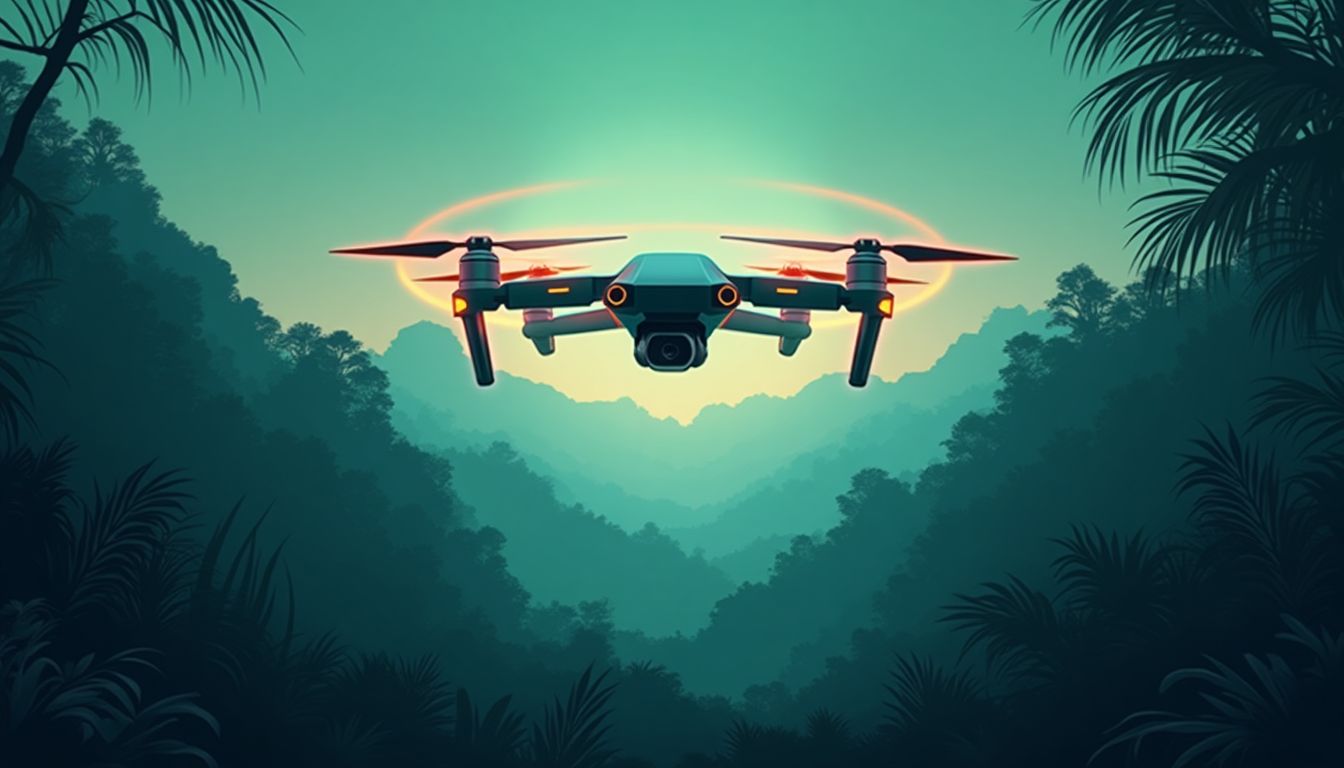
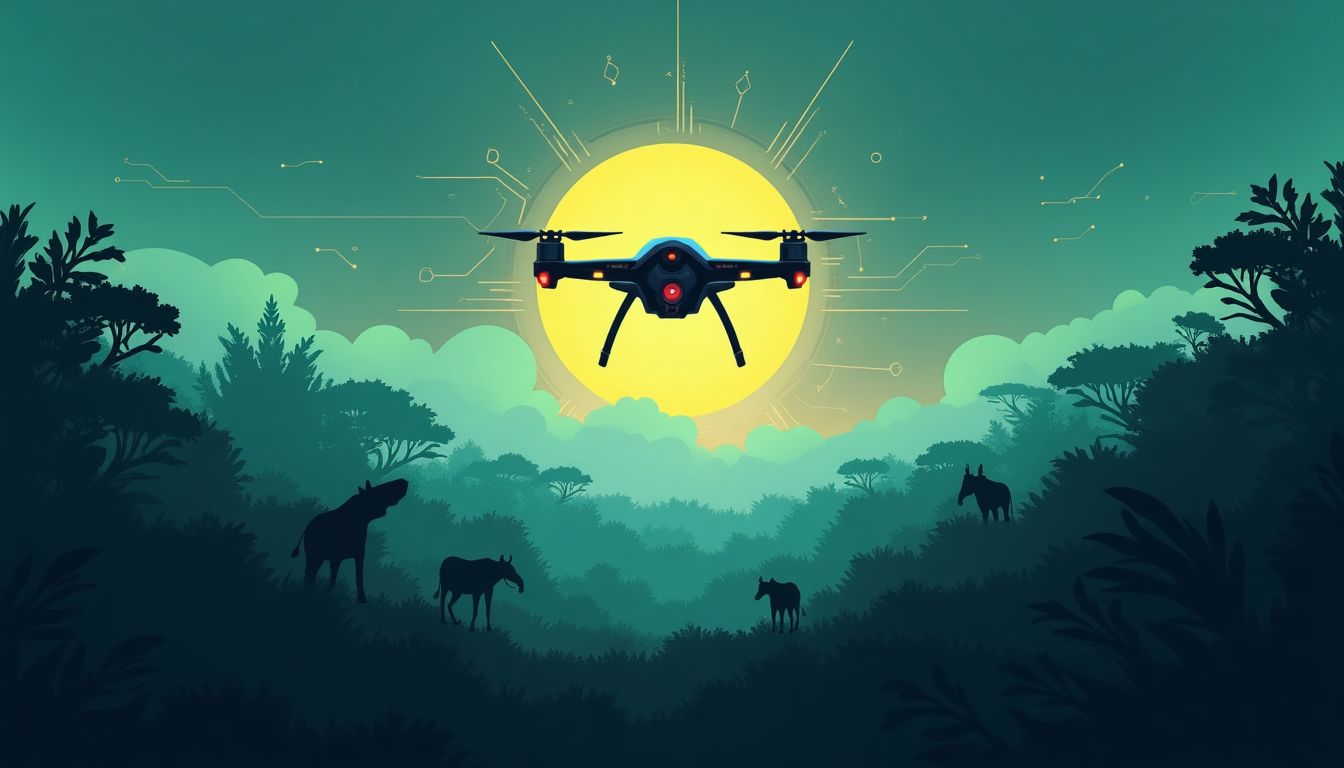
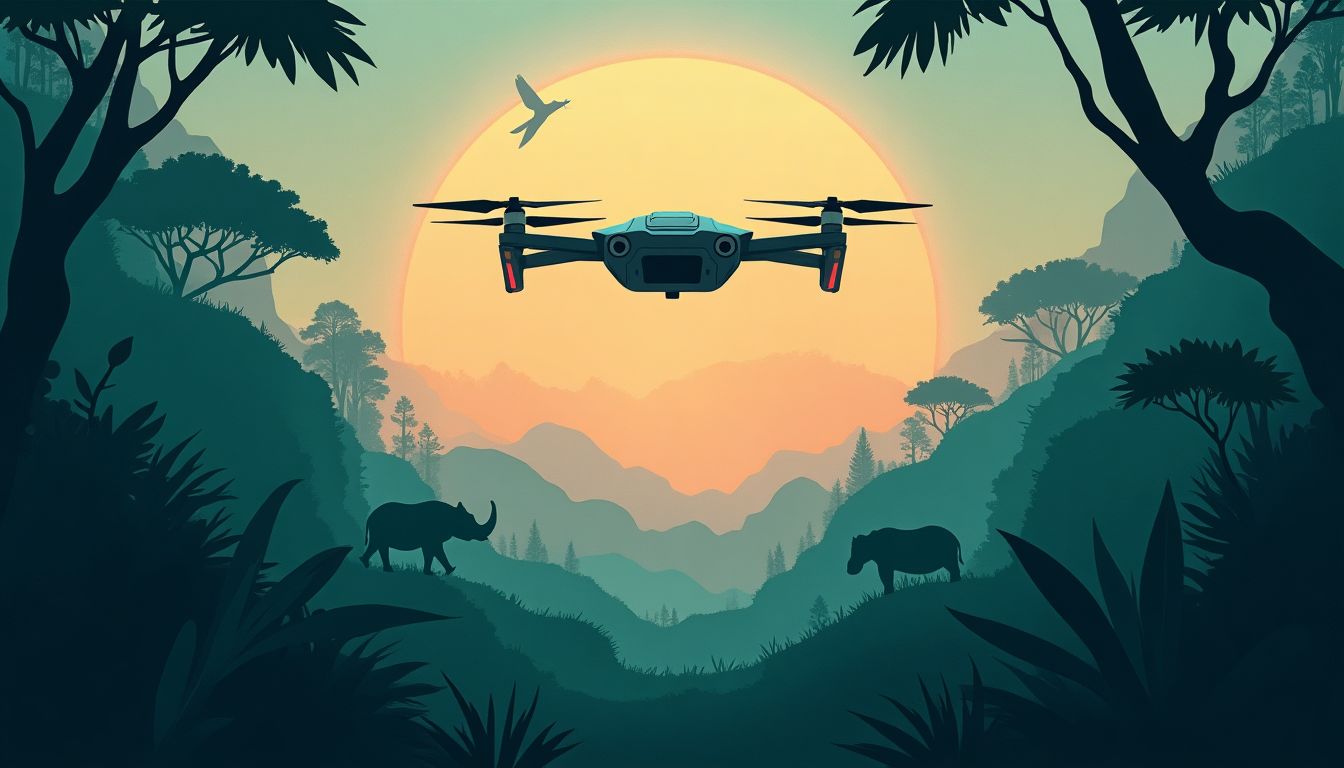
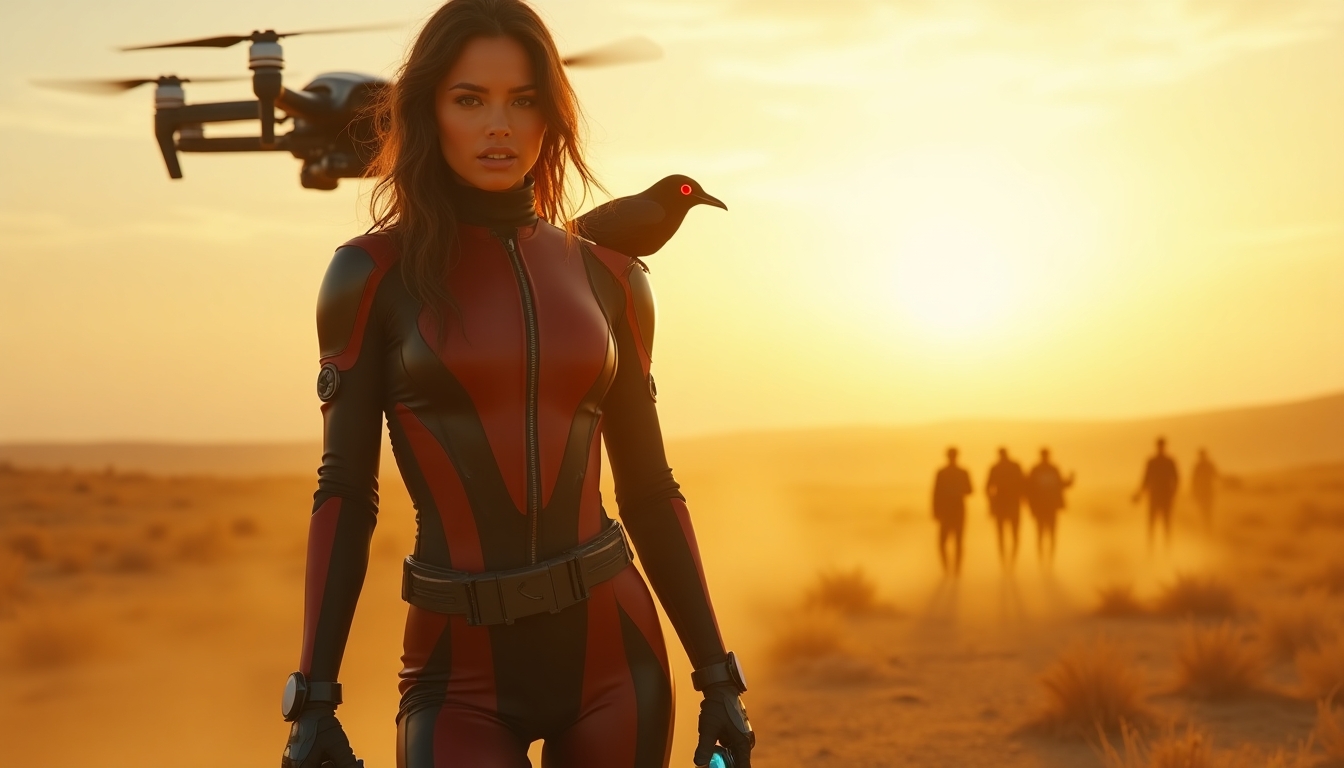


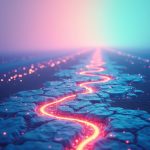




















1 comment